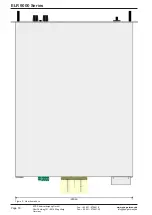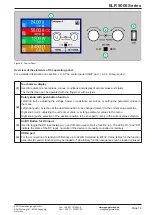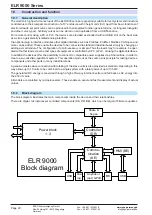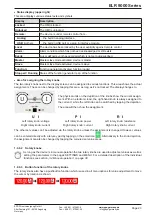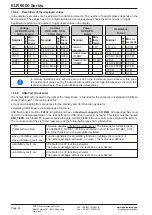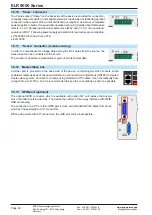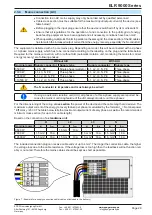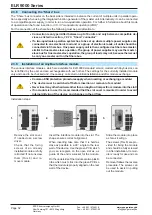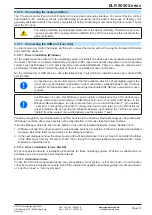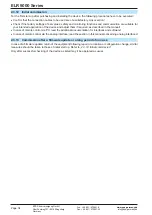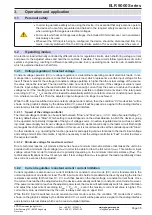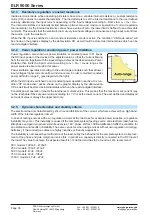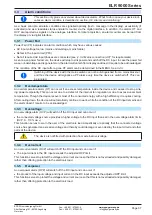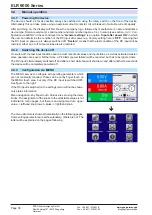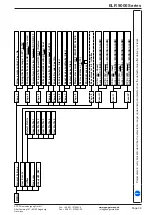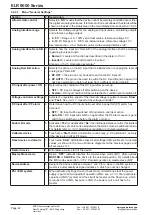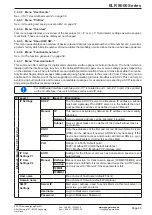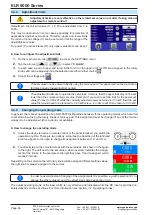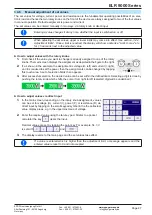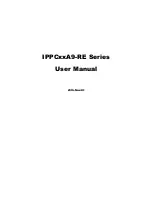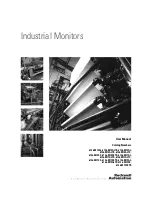
Page 32
EPS Stromversorgung GmbH
Alter Postweg 101 • 86159 Augsburg
Germany
ELR 9000 Series
Fon: +49 821 / 570451-0
Fax: +49 821 / 570451-25
2.3.8 Connecting the “Share” bus
The “Share” bus connector on the back side is intended to balance the current of multiple units in parallel opera-
tion, especially when using the integrated function generator of the master unit. Alternatively, it can be connected
to a compatible power supply, in order to run a two-quadrants operation. For further information about this mode
of operation can be found in section
„3.10.3. Two quadrants operation (2QO)“
.
For the connection of the share bus the following must be paid attention to:
•
Connection is only permitted between up to 10 units and only between compatible de-
vices as listed in section
•
If a two-quadrants operation system has to be set up where multiple power supplies are
connected to one electronic load unit or a group of electronic loads, all units should be
connected via Share bus. One power supply unit is then configured as Share bus master,
similar to true master-slave operation. The group of power supplies may use the master-
slave bus for true master-slave operation, the group of loads may not, because there must
be only one master unit on the Share bus.
2.3.9 Installation of an AnyBus interface module
The various interface modules, which are available for ELR 9000 standard version models with Anybus slot, can
be retrofitted by the user and are exchangeable with each other. The settings for the currently installed module
vary and need to be checked and, if necessary, corrected on initial installation and after module exchange.
•
Common ESD protection procedures apply when inserting or exchanging a module!
•
The device must be switched off before insertion or removal of a module!
•
Never insert any other hardware other than an AnyBus-CompactCom module into the slot!
•
If no module is in use it is recommended that the slot cover is mounted in order to avoid
internal dirtying of the device and changes in the air flow
Installation steps:
1.
2.
3.
Remove the slot cover.
If needed use a screw
driver.
Check that the fixing
screws of an already
installed module are fully
retracted. If not, unscrew
them (Torx 8) and re-
move module.
Insert the interface module into the slot. The
shape ensures correct alignment.
When inserting take care that it is held as
close as possible to a 90 ° angle to the rear
wall of the device. Use the green PCB, which
you can recognize on the open slot as, as
guide. At the end is a socket for the module.
On the underside of the module are two plastic
nibs which must click into the green PCB so
that the module is properly aligned on the rear
wall of the device.
Slide the module into place
as far as it will go.
The screws (Torx 8) are pro-
vided for fixing the module
and should be fully screwed
in. After installation, tre mod-
ule is ready for use and can
be connected.
Removal follows the reverse
procedure. The screws can
be used to assist in pulling
out the module.

